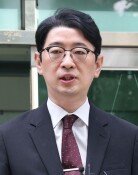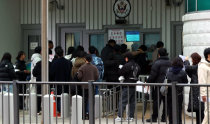Feasibility of 2.7 million home plan should be carefully ascertained
Feasibility of 2.7 million home plan should be carefully ascertained
Posted August. 17, 2022 08:03,
Updated August. 17, 2022 08:03
The first real estate plan of the Yoon Suk-yeol administration, which are designed to supply 2.7 million homes nationwide over the next five years, were unveiled on Tuesday. The key goal of the plan is to significantly expand the housing supply through various deregulations, including supplying 500,000 units in Seoul by revitalizing reconstruction, redevelopment and private urban composite projects.
In the ‘816 measures’ released on the day, the government said it will reduce the reconstruction burden of tens of millions to hundreds of millions of won per household to increase the supply of apartments for reconstruction and redevelopment in the Seoul metropolitan area, and to loosen the excessively strict safety diagnosis requirements. As for the private-led high-density complex development projects promoted in areas near train stations, etc., the floor area ratio of up to 500 percent will be permitted. The government also announced that it will introduce a youth cost housing with a guaranteed future profit if it is supplied from the government at 70 percent or less of the market price and resold to the state after residing.
Since the housing supply rate in Seoul remains at the 95 percent level, measures for a stable and continuous housing supply needs to be formulated. Considering the demand for better homes and the rapid increase in single- or two-person households, the housing penetration rate in the Seoul metropolitan area needs to rise to 110 percent. Nevertheless, one may question how feasible the government’s new housing plan will turn out to be.
Because for the government's measures to be realized, 500,000 homes in Seoul alone, 56 percent more than the 320,000 units supplied by the government for the past five years, need to be built within the next five years. Even if the goal of the government’s measures is based on the number of ‘licenses and permits issued,’ 30 percent of the current 1.71 million homes in Seoul need to be additionally supplied through reconstruction, redevelopment, and high-density development to achieve this goal. This will prove to be a gargantuan task even if regulations are relaxed and various procedures are compressed to speed up the process.
In addition, the ‘Reconstruction Excess-Profits Act’ needs to be amended to ease the reconstruction burden, but the possibility of such is remote as the Democratic Party of Korea opposes the amendment. In addition, as for the easing of safety diagnosis regulations, which residents of old apartment complexes with reconstruction and redevelopment plan have high expectations, even though amendment of the relevant enforcement ordinance will do the trick, the implementation may not so easy, because when the Park Geun-hye administration relaxed the regulations in 2014, it led to a big surge in the market price of reconstruction apartments in Seoul.
The government should focus on increasing actual number of housing units rather than boosting the suggested figures. Currently, house prices have been stabilizing downward, with apartment prices falling for 11 consecutive weeks in Seoul, but this is the result of a sharp increase in interest rates, which means the market situation after next year may change significantly. In particular, unreasonable government supply measures should not cause unnecessary unease in the real estate market.




![화장실 갇혔을 때 생존법…“최후에는 변기뚜껑” [알쓸톡]](https://dimg.donga.com/c/138/175/90/1/wps/NEWS/IMAGE/2025/12/26/133042007.3.png)


